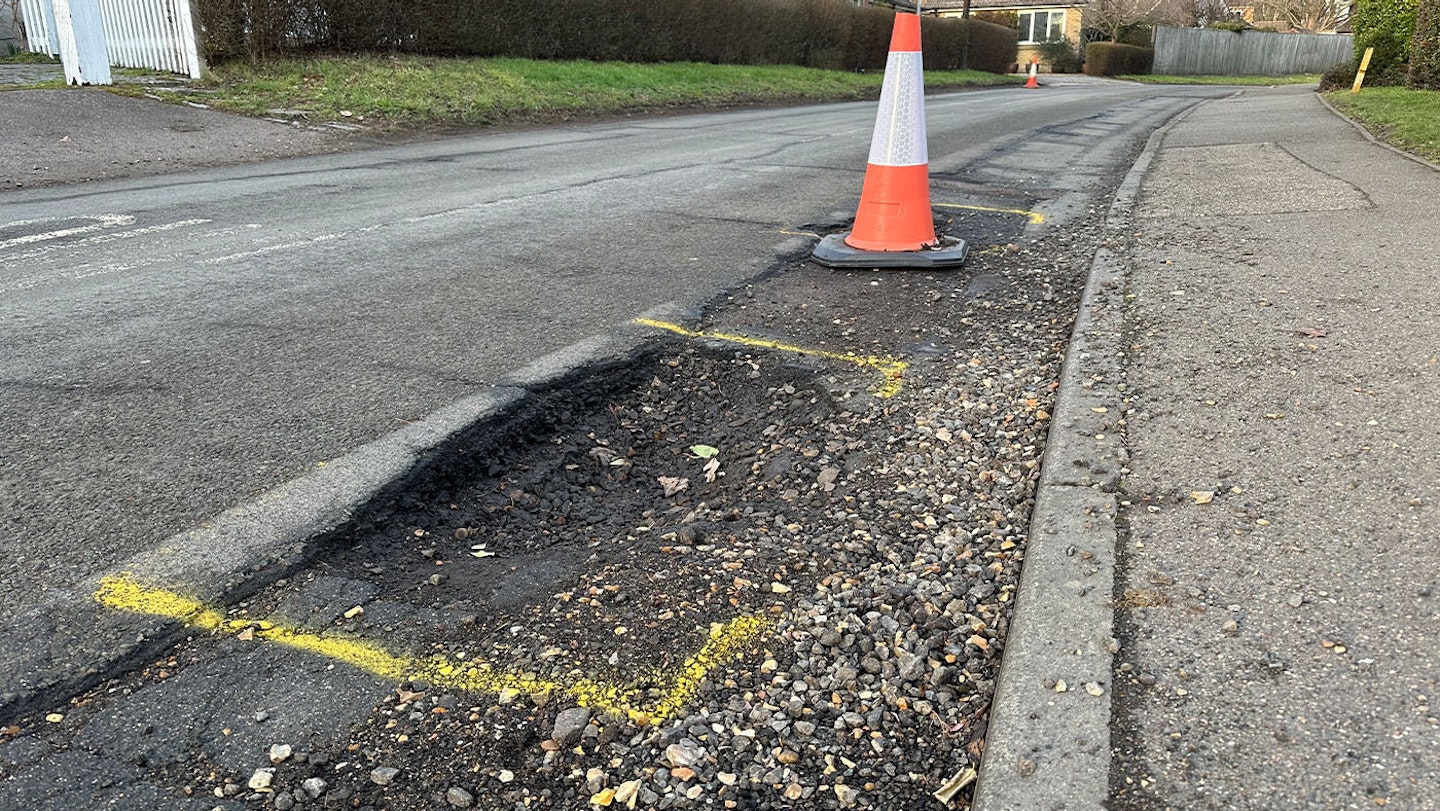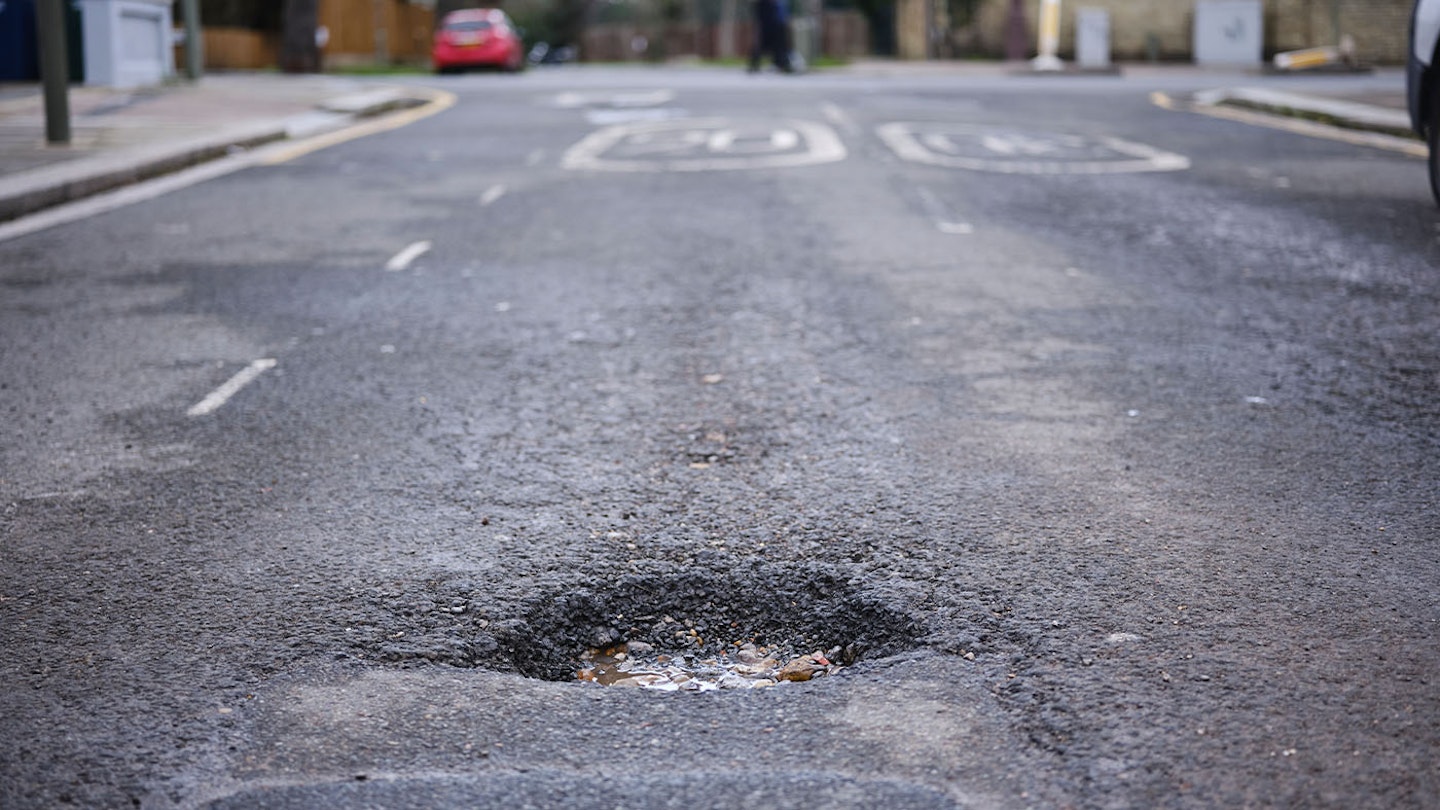If you're a driver, you'll be well aware of how many potholes you have to dodge on the roads these days which is why so many of us are having to claim for pothole damage to our cars.
There's nothing worse than hearing and feeling that horrible clunking sound when you drive over an unavoidable pothole, and whether it's a damaged tyre, cracked wheel or worse, there'll probably be a very unwelcome repair cost involved.
According to figures from the AA, in 2023, potholes were responsible for over 300,000 steering, suspension and tyre breakdown cases between January-July alone. They've gotten so bad that many are calling for advice to be given around potholes in the highway code as they can cause serious road accidents. The good news is that whoever is responsible for that road has a legal duty to maintain it and if they don't, they should pay for repairs.
What is a pothole?
A pothole is a large hole in the road surface. They're mostly caused by a combination of water under the surface of the road which then freezes and create gaps. Combined with the constant flow of traffic over it, it can cause cracks which eventually lead to larger holes as the crack worsens over time.
How to report a pothole

Even if you haven't caused damage to your car, you should report any pothole you are forced to dodge as it will protect others on the road. You can do this by contacting your local authority. To make sure you're contacting the correct people, we'd recommend reporting the pothole on the Government website so you know you're definitely reporting it to the correct local authority.
Requirements needed to make a claim
Depth of the pothole – the pothole in question needs to be at least 4cm deep.
Prove it was the pothole that caused the damage – It'll be pretty obvious if your car has been damaged by the pothole. You may feel your steering wheel is pulling slightly or shaking. You may also get a notification that tyre pressure has been lost. The best way to prove this is by taking your car to the mechanic as soon as you notice the damage after hitting the pothole, and asking your mechanic to put this in writing for you.
If your car was already damaged before hitting the pothole – If the pothole made an existing problem worse, then you may still be able to claim some damage costs but not the full amount.
How to make a claim for pothole damage

Claiming for pothole damage can be a lengthy process but if you're successful, it could save you a lot of money on reparation costs.
Step 1: Gather photo evidence
The first thing you need to do is gather all the evidence you need. Remember, taking photos of a pothole and measuring it can be very dangerous, especially on busy, high-speed roads so only attempt to gather evidence if it's safe to do so.
We'd recommend taking a ruler to the pothole along with a camera or camera phone and taking pictures of the depth of the pothole, width of the pothole and close-up photos. As well as this, it's a good idea to take some photos from a distance to assess the pothole's position in the road. It is also beneficial to take photos of the wider area so it's easy to pinpoint the exact location of the pothole. For example, are there any roadsigns or places of interest in the background that could make it clearer where it is?
Finally, you'll need to take some clear photos of your car and the damage caused. You may want to get some help from your mechanic with this as tyre damage can often be hidden. It's also a good idea to give your alloys a good clean before taking any images as you want to be able to see the damage as clearly as possible.
Step 2: Gather written evidence
To back up your photographic evidence, it's a good idea to collate some written evidence.
Make a note of the pothole's precise location and be as specific as possible from the distance from the side of the road to any nearby signs or landmarks. You may find it helpful to illustrate a map too or print a photo of the area of the pothole to mark its location on a map or in car satnav image.
You'll also want to document exactly what happened at the time you hit the pothole. What the date and time was it, what were the conditions like, what was the weather like to be as accurate as possible.
Do you have any witnesses? As well as people in your car, were there any passers-by who may able to provide you with an account of what happened? Could there be people at a bus stop who you could ask to send you an account of how hazardous the pothole was?

Step 3: Keep receipts
As you're claiming for repair costs, you should keep all receipts from your mechanic which should be dated and clearly itemised with the specific costs for each item of work or materials. It's also a good idea to ask your mechanic if they'll provide you with a written note that they believe the damage was caused by a pothole.
Step 4: Make the claim
Once you've gathered all your photographic and written evidence and the damages have been repaired, you are ready to make your claim. The easiest way to do this is by heading to the Government website or National Highways if you're in England and finding the authority responsible for that patch of road and using their online claims form to make your claim. You may prefer to telephone them to find the local authority you need to contact. Alternatively, if you're familiar with the area and know who is responsible, you can go direct to them for their claims form and process.
This is likely to be what's called a fast form and these are the easiest and quickest forms to claim with.
How long does claiming for pothole damage take?
This can really vary and you may need to be very patient. While some take as little as four weeks, others can take around eight months to process.
Will my claim definitely be successful?
You're not guaranteed to get your payout and while some are successful and get their full payout with few challenges, others may only get a fraction of the payout in the form of a settlement while some even take it all the way to court.
How far back can you claim?
We'd recommend claiming as soon as possible as it'll be much easier to gather all the relevant information needed to make your claim.
If for whatever reason you have been delayed, then the official limit for retrospective claims is six years (and five years in Scotland).
Should I contact my car insurer?
This is totally up to you. If the reparation costs are expensive and you need it fixing ASAP, then claiming through insurance is much quicker than making a claim, however, you should note that if you have claimed through insurance, there's no point in then making a claim with the local authority responsible for the road as this compensation will then be paid directly to the insurance company, not you.
It's also worth noting that if you do claim on insurance, it could massively impact your insurance premium and also your no-claims bonus. You should also consider your excess too.
Lorna White is a Senior Digital Writer at Yours.co.uk. She was previously a writer at Yours Magazine writing features and news stories before joining the digital team. Lorna loves the great British countryside and likes to spend her spare time out and about in her home of Nottinghamshire walking her dog, Pippin.
